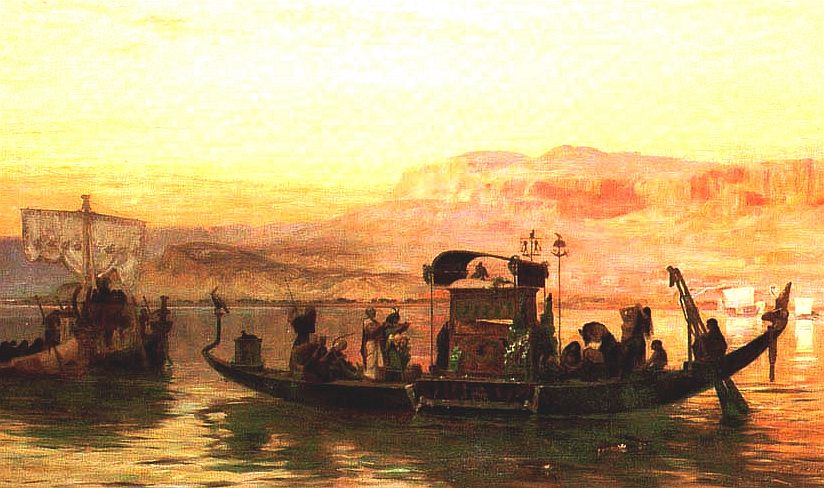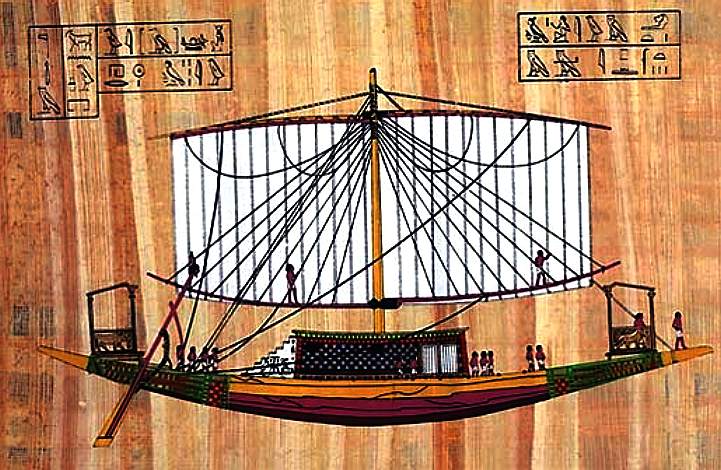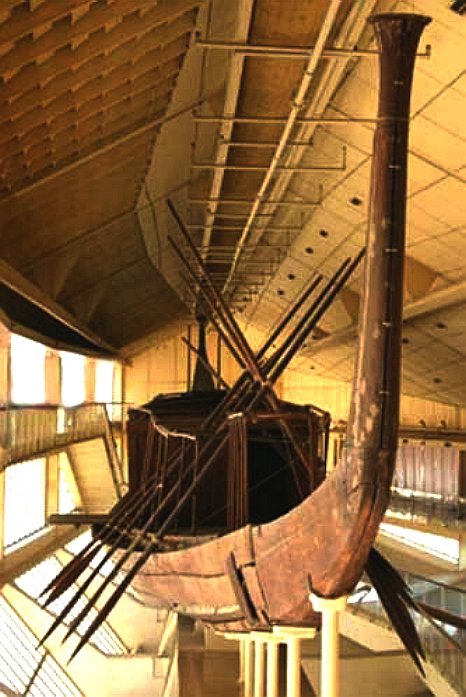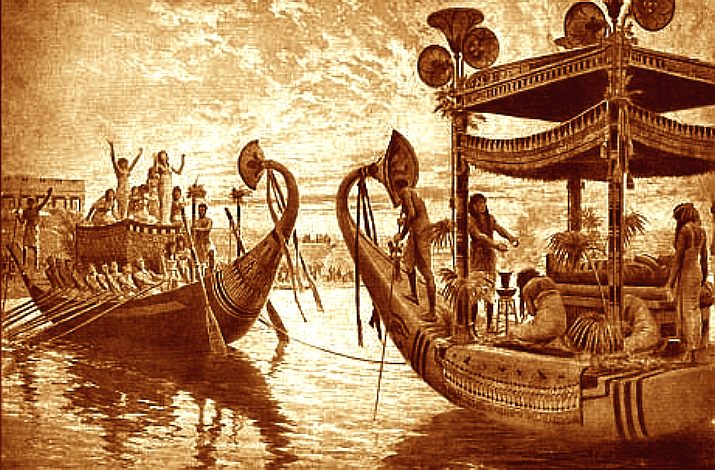|
CLEOPATRA THE MUMMY REBORN
INDEX TO SCRIPT SCENES V 2.0
|
CHAPTERS: The chapters of this story are published live for collaboration development purposes, using the Chapters below, supplemented with other (as yet unpublished) writings as we progress. The final order for the proposed screenplay may be the subject of additional drafts to suit production of a final movie (producers/directors/actors) or network adaptation. Using this outline, studios should be in a position to gain an idea of style and commercial value, please request a copy of our Kulo-Luna (draft) screenplay. See our terms and conditions. The script version of these Chapters will not be published mainstream as a novel for a suitable period, but will be available (as with Kulo-Luna), also lodged with the British Library. Including this and other associated websites.
Please note, this is the Index page for the revised Plot V 2.0 script focused on Cleo's preparations for the afterlife as written below, and working towards a comic script adaptation using the tools in Final Draft. The initial scene sequence (derived from Book Chapters) is in the process of being subdivided and re-sequence for May 2025 target. The Final Draft is sure to be in a very different order, to add a little spice for readers and viewers. Though the original content and concept remain the same.
ANGEL OF DEATH - Anubis and Isis occupy Josef Mengele's and Adolf Hitler's subconscious as spirits steering their legacies.
WWII ENIGMA - The birth of computers at Bletchley Park under Alan Turing, code breakers, the Colossus and Adolf Hitler's Enigma
INNER CIRCLE OF SIX - Nazi funded medical human research laboratories. Joseph Mengele's backup plan for a Fourth Reich, to be structured by selected escaped scientists, with relocation to Brazil, as a reserve plan if it looks as though Germany might lose World War Two.
BRAZIL BOUND - Doctor Death bargains for funding and logistics of relocation to Amazon South American base via Argentina.
THE BATTLE OF ACTIUM - Queen Cleopatra retreats leaving Mark Antony to lose against Octavian and seek a new deal with Rome.
THE POISON ASP - Alexandria, the site of Cleopatra’s palace, where she entertained Julius Caesar and Marcus Antonius (Mark Antony), two of the most prominent Roman generals in ancient history, the queen sought refuge in her mausoleum, and grief stricken, took her own life, having brokered a pact with Anubis and Isis for protection in the Afterlife. This signaled the end of the Hellenistic (Ptolemaic) dynasty in 30 BC, with the combined suicide of Mark Antony and Cleopatra, following their defeat at the naval Battle of Actium.
WRATH OF THE GODS - The destruction of Thonis, sinking of the civilization by earthquake & tsunami, C. 600 AD.
NEW WORLD ORDER - A Neo-Nazi plan to regenerate Aryan supremacy, is led by Baron Richthofen (Nazi occultist), working with Rudolf Kessler, a German archaeologist specializing in Egyptology, and Klaus von Kolreuter, a Swiss DNA expert.
THE AFTERLIFE - Cleopatra's tomb lay lost for centuries submerged and out of sight with little change of discovery.
REBEL WITHOUT A CAUSE - Having reached the end of his PhD, William and Jane Bates have epiphanies, Will should follow his dream
ROADBLOCK - Nobody would fund his R&D, William and Jane Bates are blanked by DARPA, computer and software houses
QUANTUM LEAP - Jane and Will find backers, then US military and computer processor chip makers cyber attack, hack and bug them
EXIT STRATEGY - Realising they will always be a target from industrial and military espionage, Jane & Will devise a cunning plan
CYBERCORE GENETICA - Nano computer technology is purchased at an auction by a religious sect, aiming to resurrect the last Queen of Egypt.
WASHING MACHINE - Inventor Franco Francisco comes up with the Incubus, artificial uterus concept while repairing his household appliance
PATENT APPLICATION - Franco Francisco files his Claims with the Italian Intellectual Property Office (IPO) in Roma, Italia
INCUBUS - Italian scientist Franco Francisco had been perfecting his art, cloning large mammals, then finally managed to nurse a human embryo to fetus and birth with amazing results. He was watched closely by the religious Neo Nazi cartel, having published a paper on the possibility of digital reincarnation.
SPLICE - Klaus von Kolreuter perfects his DNA manipulation genome sequencing at Genomino Investments, Geneva, together with brain conditioning system.
TREMORS - Cleopatra's tomb lay lost for centuries. Then one day a shift in the tectonic plates triggered a tremor off the coast of Alexandria.
PANAMANIAN RUNNING MAN - Sam Hollis investigates a youtube video uploaded by Marjorie Boyle, showing the world's faster human runner.
MAJORIE BOYLE - Sam Hollis tracks down sexy backpacker, Majorie Boyle, to Brighton Point in Trinidad, beautiful Caribbean Island
THE ARK - NeuWelt Rittertum headhunt John Storm seeking access to his genetic DNA map of life on earth, but they fail to reach agreement
THE AMAZON - Charley Temple agrees to meet John Storm as to disturbing technology she had discovered in a village on the banks of the Amazon, that engineers enhanced humans. Storm is an amateur archaeologist, who has amassed a sizeable DNA collection that is stored onboard the amazing 'Elizabeth Swann.' An autonomous vessel powered by renewable energy, with onboard AI to assist the crew on their adventures. he is keen to find out more.
OPERATION LEVIATHAN - New World Knights, Klaus and Franco go to Plan 'B' to track and steal the Elizabeth Swann & The Ark DNA database
TOMB RAIDERS - Safiya Sabuka tracks down Ahmed Saleh and persuades him to reveal where he found an ivory comb that could only have come from Cleopatra's mausoleum.
SCOTLAND YARD - A US contingent headed by Jack Mason (CIA) had been shadowing the German fanatics with the Egyptian secret service, as they take more than a passing interest in these revelations, they realise the implications. Mason is also liaising with Scotland Yard who shared an expansive DNA database, with the Ministry of Defence, DARPA and Interpol.
OPERATION ALEXANDRIA - Safiya Sabuka, Musa Bomani and Panama, dive Ahmed Saleh's location & recover Cleopatra's sarcophagus from a watery grave.
SALVAGE RIGHTS - Entering Cleopatra's mausoleum, locating sarcophagus and raising with air bags to the surface, Safiya Sabuka tomb raider.
COASTGUARD PATROL - Safiya and Musa surface off Alexandria to a waiting customs vessel, they pretend to be sports divers fooling the officials
SARCOPHAGUS OPENING - The wooden inner casket is opened revealing Cleopatra's mummy, golden crown and death mask, perfectly preserved
KIDNAP - Charley is taken prisoner while investigating a former Nazi lair near Manaus. John Storm and Dan Hawk rescue her and discover human enhancing technology, which Dan gets to work on understanding, using John as the subject, after he is injected with a CRISPR virus during a fight.
UNESCO - Fearing heritage theft, asks agencies for help. Interpol issue Red Notice. Blue Shield enlist John Storm, as an expert on anthropological DNA, via Jack Mason, CIA coordinator.
AWAKENING - In the afterlife, the DNA extracted from Cleopatra's mummy triggers a divine stirring with Anubis and Isis comforting the Nile Queen
REPLICANT - The Society reproduce Cleopatra using Francisco's RepliVator™, uploading synapse sequence and implanted memories.
BRAIN CONDITIONING - Klaus and Franco upload digitally recreated memories in historical order to trigger correct learned synapse firing sequence
REBORN - The former Queen of Egypt speaks for the first time to her creators, proving that her brain is working, the implants succeeded
FULL STEAM AHEAD - Storm speeds to Thonis, then uses the Swann's AI sensors and the Ark database to find tomb has been plundered.
PROPOSAL - Baron von Richhofen's gambit, a union of Royal ancient and Aryan blood, for strength and intellect, a powerful heir as her successor
RITUAL SACRIFICE - The Baron prepares a drugged Cleopatra for ceremonial impregnation.
MANAUS TO ALEXANDRIA - A hydrogen powered race across the Atlantic Ocean in nine days, John Storm guided by Anubis and Isis
SANCTUM INTERRUPTUS - John finds hidden chamber near Alexandria, disturbs ritual joining, arresting conspirators, though Baron escapes.
THE CHOSEN ONE - The reincarnated Cleopatra falls for John Storm, the image of Marcus Antonius. John comes under her spell.
MOVIES, WHAT ARE THEY - Reincarnated Nile Queen asks John and Dan to explain films, they show her 20th C. Fox 1963 Elizabeth Taylor biopic.
MEDITERRANEAN CRUISE - John suggest a tour of the Wadj Ur, Thalassa Nostrum, to relax Cleopatra, Hal plans the ultimate experience
JOHN'S BLOODLINE - Dan and Hal trace trace John's noble lineage back to the iconic figures of Ancient Egypt & Roman General Mark Antony
MEDICAL EXAMINATION - Jack Mason talks John and Cleopatra into agreeing to a check up at Port Royal, Jamaica, working for NSA and CIA
GEORGE WARNS OF TORTURE - Franks radios Swann to tell John & Dan that New World Knights are being tortured at Guantánamo Bay, you're next
JESUS CHRIST - Cleopatra asks about this man. John, Dan & Hal explain he is an ancient religious preacher from Galilee, son of Yahweh, Hebrew god
BIOCORE BRAIN IMPLANT - Dan and Cleopatra drill John's skull, occipital bone implanting biological chip to interface with CyberCore Genetica
DARPA, NSA & CIA - National security and military intelligence chiefs Iras Charmian and Dr Stefan Raengst, plot to remove all human obstacles
MILITARY INTERVENTION - US military detain Cleopatra as security threat, despite media and medical protests. Storm is distraught.
BATTLE ARMOUR - With some unexplained divine intervention, Dan Hawk talks John Storm into wearing a bullet proof suit.
GUANTÁNAMO BAY - History repeats itself. DNA digitally enhanced John rescues Cleopatra from Guantánamo Bay, CIA try to sink Swann.
MISSION IMPOSSIBLE - Commander John Storm, in Navy SEAL mode, attacks the Cuban torture camp at Guantánamo Bay, in stealth mode, black op.
MISSILE LOCK - USA military try to hack into Hal, anticipating a strike, as the DOD launch Tomahawks, John hacks into NORAD, and redirects them.
PRESIDENT LINCOLN TRUMAN - Hails the Swann to find out why John is shooting missiles at Guantánamo Bay, Storm sets the record straight. FINALE
|
|
A FRESH START - Cleopatra led a fraught life, fighting her corner in difficult times. The stress proved too much for the beleaguered queen of Egypt, leading her to take her own life, rather then be paraded around like her sister Arsinoe IV. When she is brought back to life some 2,000 years later, as the world's first time traveller, she is given a second chance to find happiness and help the world heal their political divisions against a common enemy; the kleptocratic ambitions of many world leaders - that will ruin the planet and kill much of the animal kingdom, if left unchecked.
JOHN STORM is captain of the Elizabeth Swann, a solar and hydrogen powered craft, that he likes to race occasionally. The Elizabeth Swann is not only swift, but superbly equipped for scientific and ocean conservation tasks, such as archaeological surveys. The vessel also houses John's prized DNA archive, called The Ark, a useful reference tool. The vessel is an ongoing real life design study. The Foundation has a shipbuilder ready to construct the craft as per the illustration above, for film work, for ocean survey and more.
|
|
|
|
Please use our A-Z to navigate this site or return HOME
The rights of Jameson Hunter and Cleaner Ocean Foundation to be identified as the author of this work has been asserted in accordance with section 77 and 78 of the Copyright Designs and Patents Act 1988. This website and the associated Cleopatra artwork is Copyright © 6th January 2025 Cleaner Ocean Foundation and Jameson Hunter. This is a work of fiction. Names and characters are the product of the authors' imaginations, and any resemblance to any person, living or departed, is entirely coincidental.
|





